 |
Forest floor with huge roots and dense foliage PC: Priya Rajan
|
A sample food chain in the rainforest:
Climbers that grow on a host tree often end up killing the host
tree by grabbing all the sunlight and nutrients. Once the tree is dead, large colonies
of termites aid in decomposing its barks into humus. The ant-eaters that feed
on termites disperse the nutritious humus when they dig the decomposed bark
with their limbs. The nutrients thus spread and enrich the soil. Reptiles like
snakes, frogs feed on ant eaters and in turn they are hunted by predators like
Serpent eagle.
Are you wondering why and how all this botany/geography lecture?
😊
Well, we have the naturalist Mr. Mahesh of the Wild Planet Resorts Devala to thank. His
guided rain forest walk was one of the highlights of our stay there in June 2022. The sounds of
the woods, the descending mist and the sudden drizzle during the walk are still
etched in our memories even three months after our visit. Situated in such an
ancient ecosystem, such initiatives are a welcome-must to spread awareness
among the guests who otherwise might generally enjoy the place mostly for
relaxational and recreational purposes.
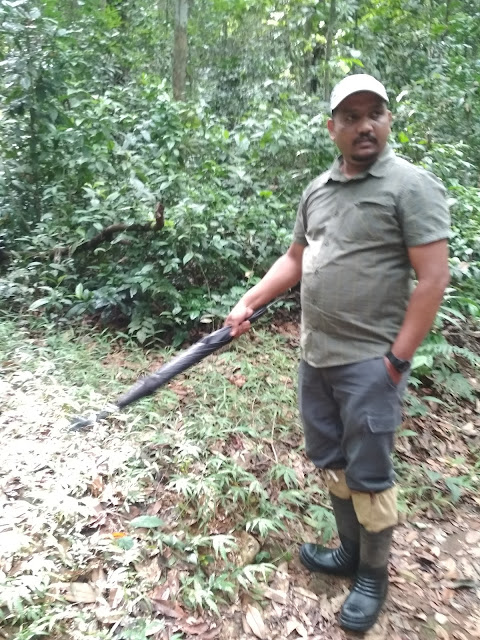 |
| Mahesh the naturalist at Wild planet resorts |
 |
| The Wild Planet Resorts Devala in the Nilgiris range PC: Kalirajan Subramanian |
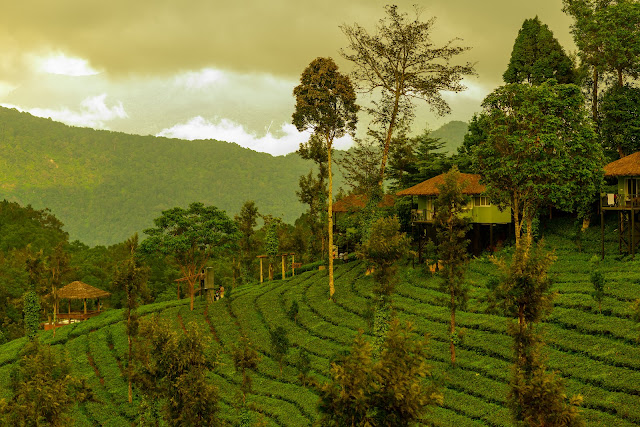 |
| The picture perfect locale of the resort in a tea plantation surrounded by rainforest ranges PC: Kalirajan Subramanian |
Wild Planet Jungle Resorts
The resort is located
in the quaint village of Devala at the Tamil Nadu, Kerala border adjacent to
Bandipur and Mudumalai Tiger Reserves. Situated at 3500 ft. above sea level,
surrounded by tropical rainforests of the Nilgiris mountain range, this is one
of the last bit of unpolluted environs accessible for the most undisturbed and
unforgettable tete-a-tete with nature.
Routes and reachability
All
information is clearly available in their website and guided by their staff over
phone, couple of days before the stay. Here in this blog, we give you a brief
about our personal journey from Bengaluru. Our thanks to Mr. Ashok Fernandes
for giving us a smooth arrival and check-in experience.
The best route on road from BLR would be BLR-Mysuru-Nanjangud-Gundlupete-Bandipur-Theppakadu-Gudalur-Devala.
Including pitstops and the last 7km uphill from Devala to the resort being
narrow and off-road, the total drive takes roughly 7-8 hrs.
From Bandipur forest checkpost the drive is through forests and
greenery. We had ample sightings of elephants, spotted deer, wild boar,
peacocks, water birds, macaques and honey buzzard on either side of the
highway through both the Bandipur and Mudumalai forest ranges (NH181). Drive
slow respecting the speed limits, keep noise levels really low with no honking,
keep all passengers’ eyes on either side of the forested highway, then you are
sure to spot a rich variety of animals and birds all along. This gets even
better once you start climbing the hill from Devala. The entire hill is a tea
plantation with adjacent hills donning mist covered woods. You are
greeted with such tranquility, that is now rare even in the erstwhile serene
safari forests and other hill stations. The silence is only interspersed with
the chirpy tweets of small and colorful birds like orange minivets and
bulbuls. We also had a chance sighting of a barking deer, a perched and
then in-flight honey buzzard during our return drive. After 7km uphill we
reach the first gate of the resort from which, in further 2kms, is the parking
lot. At the parking lot, we park our vehicle, offload our luggage onto a 4x4 from the resort and the last leg of the climb is only done in their well-maintained
and well-driven Mahindra Boleros suitable for the elevation and bends.
 |
| A spotted deer stag and family resting by a water hole in the Bandipur range en route Devala PC: Kalirajan Subramanian |
 |
| Another stag and family in the Bandipur range en route Devala PC: Kalirajan Subramanian |
 |
| A wild boar at the same waterhole PC: Kalirajan Subramanian |
 |
| A wild elephant grazing by the side of the highway at the Gudalur range PC: Kalirajan Subramanian |
 |
A tusker grazing in the Mudumalai range PC: Kalirajan Subramanian
|
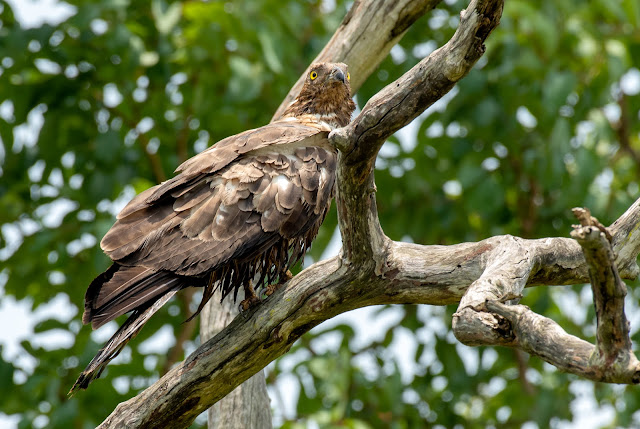 |
| Oriental honey buzzard female seen in the Bandipur range during our return journey PC: Kalirajan Subramanian |
Hospitality
From the time we hopped on to their vehicle
till the time we checked out, the one constant that we experienced from all
their staff – drivers, admin, relationship managers, room and dining service
staff, security guards – was exemplary hospitality. The resort is so designed
that from anywhere within its premises if one has to reach the dining area or
any other activity area, a small ride is required. Any of the resort vehicle
passing you by, anywhere within the premises, will always stop and inquire if
you needed a drop elsewhere. All the vehicles and the entire premises including the coops of the inhouse poultry and pet
geese were maintained spic and span every day. We saw these on both the days
during our early morning walks.
 |
| A turkey @ The Wild Planet Resorts Devala PC: Kalirajan Subramanian |
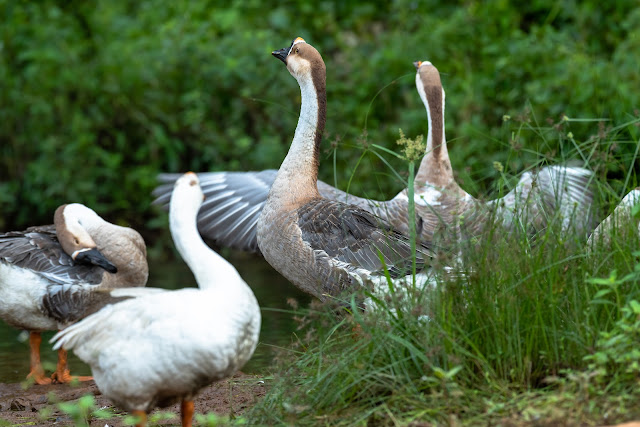 |
| Geese @ The Wild Planet Resorts Devala PC: Kalirajan Subramanian |
 |
| A turtle in one of the ponds at the Wild Planet Resorts Devala PC: Kalirajan Subramanian |
Activities
We were more interested in guided forest walks, birding and in-general observing and recording the
sights and sounds of the ecosystem. But the resort also hosts numerous outdoor
activities for kids and adults. There’s an exclusive kids play area, swimming
pool, badminton court, zip liner, kayaking etc. A walk through the long bridge
connecting one end of the resort to the other is so picturesque. Details
available here.
 |
| The kayaking area in the resort with the scenic background of the long bridge and the green hills |
 |
| The cute tea shop in the resort that served some yummy snacks too |
 |
| Shop in the resort selling tribal artware |
 |
| One of the numerous soul-soothing walkways in the resort. A birder's delight in itself |
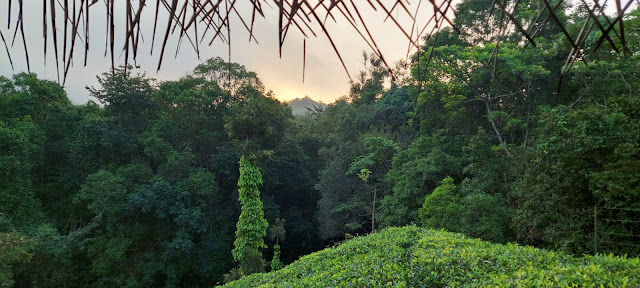 |
| The dense forest view as seen from a gazebo in the resort |
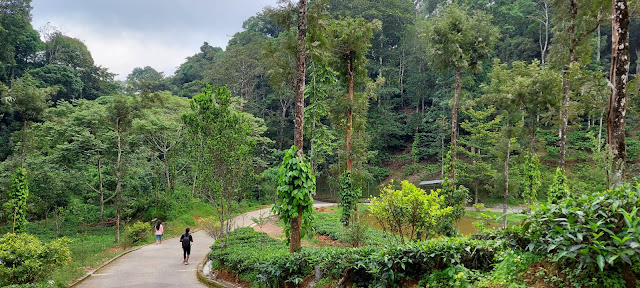 |
| Another walkway in the resort loaded with natural greenery. A shutterbug's delight |
 |
| A view from the dining area |
 |
| A snippet from the history of Devala which was once a gold mine as seen at the resort reception |
 |
| A board with ecological information |
Food
Sumptuous is an insufficient word,
to describe each meal. On the 2N/3D that we were there, we spent a lot of our
day time on foot, walking both within and in the vicinity of their premises
with our camera gears and binoculars. Hence we returned to every meal with a
growling appetite and feasted on their vast and varied spread that was different
and delectable each time. This reflected in the overall upbeat mood in the
dining area too, amidst guests across ages. And the water…eons since we tasted the elixir so naturally rich in its
own taste!
Stay
They have a host of options listed
in their website. We chose to stay in two different type of cottages on either
nights. From the valley view cottage we could see the hues of dawn and daybreak
in its breathtaking beauty and hear the Malabar whistling thrush from a
distance but from the Jungle log house we could hear him up close and crystal
clear. It was their mating season and the males sang their way into the hearts of their lady-loves!
We’d recommend the Jungle log house situated in the resort’s private
forest space, for serious nature lovers. The dawn, dusk and nights are
filled with the orchestra of the jungle musicians– cicadas, gliding frogs and
flying squirrels along with occasional calls of the Nilgiri langurs and tweets
of other birds. The melodious mating calls of the Malabar whistling thrush gently take the observer into a state of trance. If you are keen on observing a particular species’ sound or
enjoy the symphony as a whole, tune your ears, eyes and equipment from the
spacious verandah with the gifted silence of your party.(Of course the chitter-chatter can continue after stepping into the room and closing the doors) If
this excites you, then the log house is all yours with assured maximum returns.
PS: while playing the videos below, please use headphones in high volume for the best audio experience
View of their private forest from the Jungle log house. Use headphones in high volume for best audio experience
One of the many mellifluous renditions of the Malabar Whistling Thrush. Use headphones in high volume for best audio experience
Euphoric tune of this little music master elevating the already-magical dusk to a whole new level. Use headphones in high volume for best audio experience
Peppy sunrise jam of the Malabar whistling thrush and the Nilgiri langur. Use headphones in high volume for best audio experience
Yearning for more? Click here



























Comments
I have visited tropical forest near Agumbe with locals living there. These areas don’t have resorts and are not well developed like the ones in Nilgiris. Which I guess is a good thing. I saw things I have never seen before. Like tree trucks that have water in them, very interesting. I remember the forest being so very thick.